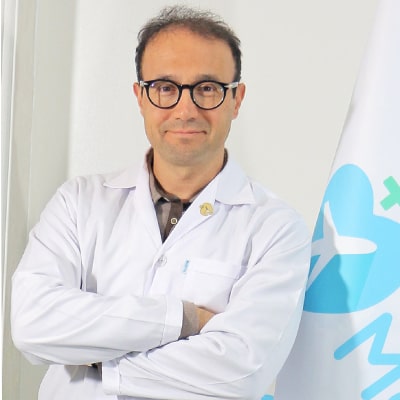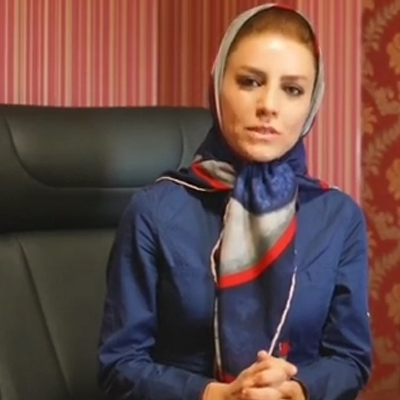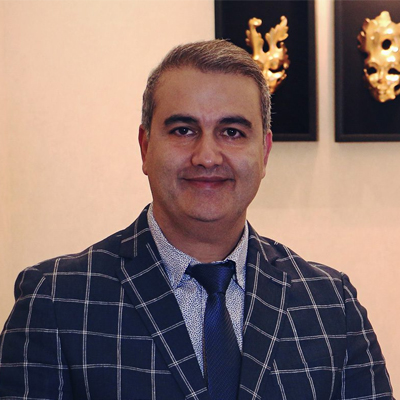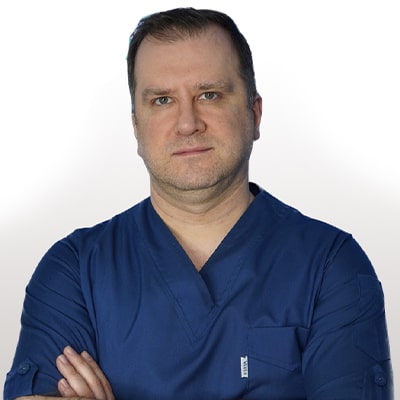Beard Transplant In Iran
A beard transplant is a surgical procedure designed to address patchy or sparse facial hair by transplanting hair follicles from one part of the body (typically the scalp) to the beard area.
We help you to double your beauty! Get in touch with our consultants…


Stay in Iran
7 days
Recovery time
10-12 days
Clinic Stay
1 day
Stay in Iran
7 days
Recovery time
10-12 days
Clinic Stay
1 day
- Packeges
- Videos
- B & A Photos
- Surgeon
- Hotels
- FAQs
The Ultimate Guide to Beard Transplant in Iran
Beards have long been associated with masculinity, confidence, and style. However, not all men are blessed with thick, full facial hair. For those struggling with patchy or sparse beards, beard transplant offers a transformative solution. In this comprehensive guide, we’ll explore the ins and outs of beard transplant in Iran, including the process, benefits, considerations, and post-operative care along with why Iran is the perfect destination for your process.
What Is Beard Transplant ?
A beard transplant is a surgical procedure designed to address patchy or sparse facial hair by transplanting hair follicles from one part of the body (typically the scalp) to the beard area.The procedure involves harvesting hair follicles from a donor area, often the back of the scalp, and implanting them into the recipient area of the face where facial hair growth is desired. Over time, the transplanted hair follicles continue to grow, resulting in a fuller and more natural-looking beard. Beard transplants in are typically performed by qualified plastic surgeons or dermatologists and are considered a permanent solution for individuals seeking to enhance their facial hair density.
Common Reasons for Considering Beard Transplant
Romanian choosing Iran for a perfect Beard Transplant result
1. Genetics:
– Many men inherit genetic traits that result in patchy or sparse beard growth. Despite their desires for a full, well-defined beard, genetic predispositions may hinder natural hair follicle distribution, leaving gaps and inconsistencies in beard density.
2. Scarring:
– Scars from past injuries, burns, or surgical procedures can disrupt the natural growth of beard hair. Scar tissue may inhibit the regrowth of hair follicles, resulting in irregular or incomplete beard growth patterns.
3. Hormonal Imbalances:
– Hormonal imbalances, such as those caused by hormonal medications, can impact beard growth. Fluctuations in testosterone levels, for instance, may lead to diminished facial hair density or slower hair growth in some individuals.
1. Genetics:
– Many men inherit genetic traits that result in patchy or sparse beard growth. Despite their desires for a full, well-defined beard, genetic predispositions may hinder natural hair follicle distribution, leaving gaps and inconsistencies in beard density.
2. Scarring:
– Scars from past injuries, burns, or surgical procedures can disrupt the natural growth of beard hair. Scar tissue may inhibit the regrowth of hair follicles, resulting in irregular or incomplete beard growth patterns.
3. Hormonal Imbalances:
– Hormonal imbalances, such as those caused by hormonal medications, can impact beard growth. Fluctuations in testosterone levels, for instance, may lead to diminished facial hair density or slower hair growth in some individuals.
4. Alopecia Areata:
– Alopecia areata is an autoimmune condition characterized by hair loss in localized areas, including the beard. Individuals with alopecia areata may experience patchy or complete loss of beard hair due to the immune system’s attack on hair follicles.
Others Video
Australian getting Beard transplant in Iran thinks it’s way better than you think
Australian getting Beard transplant in Iran thinks it’s way better than you think
Australian getting Beard transplant in Iran thinks it’s way better than you think
Australian getting Beard transplant in Iran thinks it’s way better than you think
What Our Customer Say
Iesna
GB
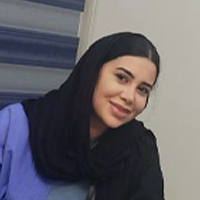
Mediranco is an excellent agency they helped me arrange my whole trip to Iran and surgery with Dr. Hooman Ganjehkhosravi. From the moment I arrived in Tehran, I was greeted with warmth and hospitality that made…
Lydia
GB

I had a guide called sara who was absolutely amazing. She was so caring and kind and made sure I was comfortable and safe throughout my trip. I really recommend any one using mediran to book with sara!
Mansoor
DK
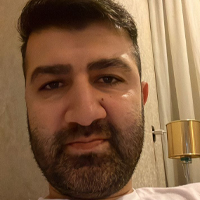
My name is Mansoor from Denmark .I highly recommend this mediranco. Mr Hossain was very kind and Good person. The Company mediranco is very fast to response. Thanks mediranco
Amal
AU

I had an amazing experience with Mediranco’s service. Traveling to Iran on November 1st, 2023, for Gastric sleeve surgery was truly incredible. From the airport pick-up to a farewell dinner on my last day, the journey was exceptional…
Now, let’s have a look at the photos of our patients in Iran!





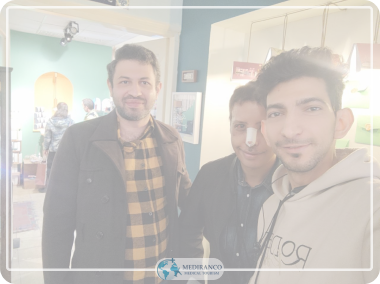
Dr Shahriar Yahyavi
+2000
Successful Surgeries
12
Years of Experience
Successful Surgeries
+5
Dr Mitra Manavi
+2000
Successful Surgeries
12
Years of Experience
Successful Surgeries
+5
Dr kasra sabeti
+2000
Successful Surgeries
12
Years of Experience
Successful Surgeries
+5
Dr Farzad Nikouseresht
+2000
Successful Surgeries
12
Years of Experience
Successful Surgeries
+5
Dr Asadollah Mahdavi
+2000
Successful Surgeries
12
Years of Experience
Successful Surgeries
+5
Best Arm Lift Surgeon Iran
The Beard transplant Process and methods:

Beard transplant is a meticulously planned and executed surgical procedure that aims to enhance facial aesthetics by restoring or augmenting beard density. Here’s a step-by-step overview of the beard transplant process:
1. Initial Consultation:
– The journey begins with an initial consultation with a qualified and experienced surgeon specializing in hair restoration. During this consultation, the surgeon evaluates the patient’s candidacy for beard transplant, discusses the patient’s goals and expectations, and develops a personalized treatment plan tailored to the individual’s unique needs and preferences.
2. Pre-operative Preparation:
– Prior to the procedure, patients may be advised to refrain from certain medications, such as blood thinners, and to avoid smoking, as these factors can affect surgical outcomes and recovery. Additionally, patients receive detailed instructions on pre-operative care and preparation to ensure optimal conditions for the procedure.
3. Donor Hair Harvesting:
– On the day of the procedure, the patient is administered local anesthesia to ensure comfort during the surgical process. Hair follicles are harvested from the donor area, typically the back of the scalp, using advanced techniques such as Follicular Unit Extraction (FUE) or Follicular Unit Transplant (FUT). The choice of harvesting technique depends on factors such as the patient’s hair type, donor hair availability, and surgeon’s preference.
4. Recipient Site Preparation:
– Once an adequate number of donor hair follicles are harvested, the surgeon meticulously prepares the recipient sites in the beard area. Tiny incisions are made in the beard region, following the natural direction and angle of beard hair growth, to accommodate the transplanted follicles. The precise placement of recipient sites is crucial for achieving natural-looking results and ensuring optimal graft survival.
5. Graft Implantation:
– With the recipient sites prepared, the surgeon delicately implants the harvested hair follicles into the designated areas of the beard. Careful attention is paid to the density, distribution, and orientation of the transplanted follicles to achieve a symmetrical and aesthetically pleasing beard appearance. The transplant process may take several hours, depending on the extent of beard augmentation desired.
6. Post-operative Care and Recovery:
– Following the procedure, patients receive instructions on post-operative care and recovery. This may include guidelines for wound care, medication administration, and activity restrictions. Patients can expect some degree of swelling, redness, and scabbing in the transplanted area, which typically subsides within a few days to weeks. Regular follow-up appointments are scheduled to monitor healing progress and ensure optimal outcomes.
7. Long-Term Results:
– While initial results may be visible within a few months, it can take up to a year for the full effects of beard transplant to become apparent as the transplanted hair follicles mature and blend seamlessly with the existing beard hair. With proper care and maintenance, patients can enjoy long-lasting, natural-looking results that enhance their facial aesthetics and confidence.
Hotels

Shiraz Hotel
Tehran, crossroad of chamran and valiasr, parsian esteghlal international hotel
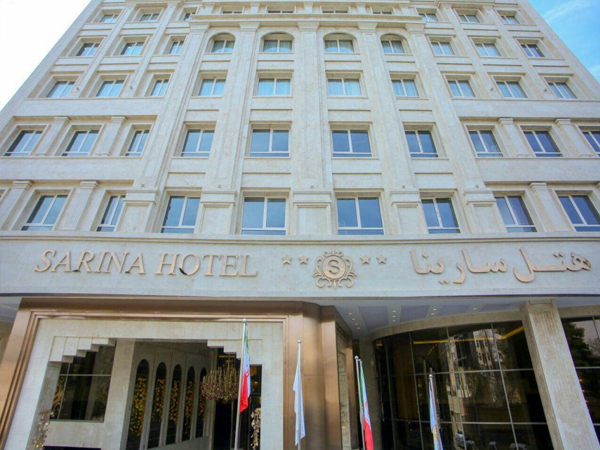
Sarina Hotel
Tehran, crossroad of chamran and valiasr, parsian esteghlal international hotel

SarayeAmeriha Boutique Hotel
Tehran, crossroad of chamran and valiasr, parsian esteghlal international hotel

Parsian Safaiyeh Hotel
Tehran, crossroad of chamran and valiasr, parsian esteghlal international hotel

Parsian Esteghlal Hotel
Tehran, crossroad of chamran and valiasr, parsian esteghlal international hotel

Parsian Azadi Hotel
Tehran, crossroad of chamran and valiasr, parsian esteghlal international hotel
How to Recover From Beard Transplant?
- Take time off work
Most patients take 7-10 days off work to recover from a Beard Transplant procedure. You will likely feel some discomfort and swelling during this time, so it is important to take it easy and rest.

- Follow your surgeon’s instructions
Guidance from your plastic surgeon is key post Beard Transplant. Adhere to their instructions meticulously for effective care. Your surgeon will provide details on cleaning the area, managing swelling and pain, and scheduling follow-up appointments. Keep your head elevated during the initial days to reduce swelling, and your surgeon might recommend a nose splint or cast for protection. Additionally, pay attention to your diet—following your surgeon’s advice on nutrition and fluid intake contributes to a smooth recovery. Trust the process and ensure the best outcomes by following your surgeon’s personalized care plan.

- Avoid strenuous activities:
You should avoid strenuous activities such as exercise, heavy lifting, and bending over for at least two weeks after the procedure. This will help to minimize swelling and prevent any damage to the delicate tissues in your nose.

- Take your medications as directed
If prescribed pain medication, take it as directed to alleviate any post-procedure discomfort. Also, to ensure the best results and prevent infections, diligently take the prescribed antibiotics. Timely and consistent medication intake is crucial, so stay on schedule and trust your surgeon’s advice for a smooth and successful recovery.

- Use cold compresses
Applying cold compresses to your nose can help to reduce swelling and discomfort. Be sure to follow your surgeon’s instructions on how often to use cold compresses and how long to apply them for.

- Attend follow-up appointments
Applying cold compresses to your nose can help to reduce swelling and discomfort. Be sure to follow your surgeon’s instructions on how often to use cold compresses and how long to apply them for.

- Avoid alcohol and smoking
Applying cold compresses to your nose can help to reduce swelling and discomfort. Be sure to follow your surgeon’s instructions on how often to use cold compresses and how long to apply them for.

Quick look at different transplant methods:
beard transplant in Iran techniques have undergone significant advancements, providing effective solutions for combating beard loss and achieving natural-looking beards. The field primarily revolves around two techniques: follicular unit transplant (FUT) and follicular unit extraction (FUE).
FUT involves the removal of a strip of scalp from the donor area, typically located at the back of the head. This strip is then dissected into individual follicular units, which are subsequently transplanted into the recipient area.
In contrast, FUE involves the extraction of individual hair follicles directly from the donor site, using a small punch tool. This method results in minimal scarring and offers a less invasive alternative to FUT.
Both FUT and FUE procedures demand meticulous precision and artistic skill to achieve natural-looking results. Recent advancements in technology have further enhanced the effectiveness and outcomes of beard transplant procedures.
These advancements bring hope to individuals seeking effective solutions for beard restoration, promising improved aesthetic results and greater patient satisfaction.
By understanding the intricate steps involved in the beard transplant process, individuals can approach the procedure with confidence and clarity, knowing what to expect at each stage of their journey toward achieving a fuller, more vibrant beard.
Benefits of Beard Transplant
1. Enhanced Facial Aesthetics:
– Beard transplant offers individuals the opportunity to achieve a fuller, more well-defined beard that enhances their overall facial aesthetics. By addressing patchy or sparse areas, beard transplant creates a harmonious and balanced facial appearance, accentuating the jawline and facial features.
2. Natural-Looking Results:
– Skilled surgeons meticulously implant hair follicles in a way that mimics the natural direction, angle, and density of beard hair growth. This attention to detail ensures that the transplanted beard appears natural and seamlessly integrates with the existing facial hair, avoiding the appearance of artificial or “pluggy” results.
3. Boost in Confidence:
– A thick, full beard can significantly enhance an individual’s self-confidence and self-image. By achieving their desired beard aesthetics, patients experience a renewed sense of confidence and empowerment, allowing them to present themselves with pride and assurance in social and professional settings.

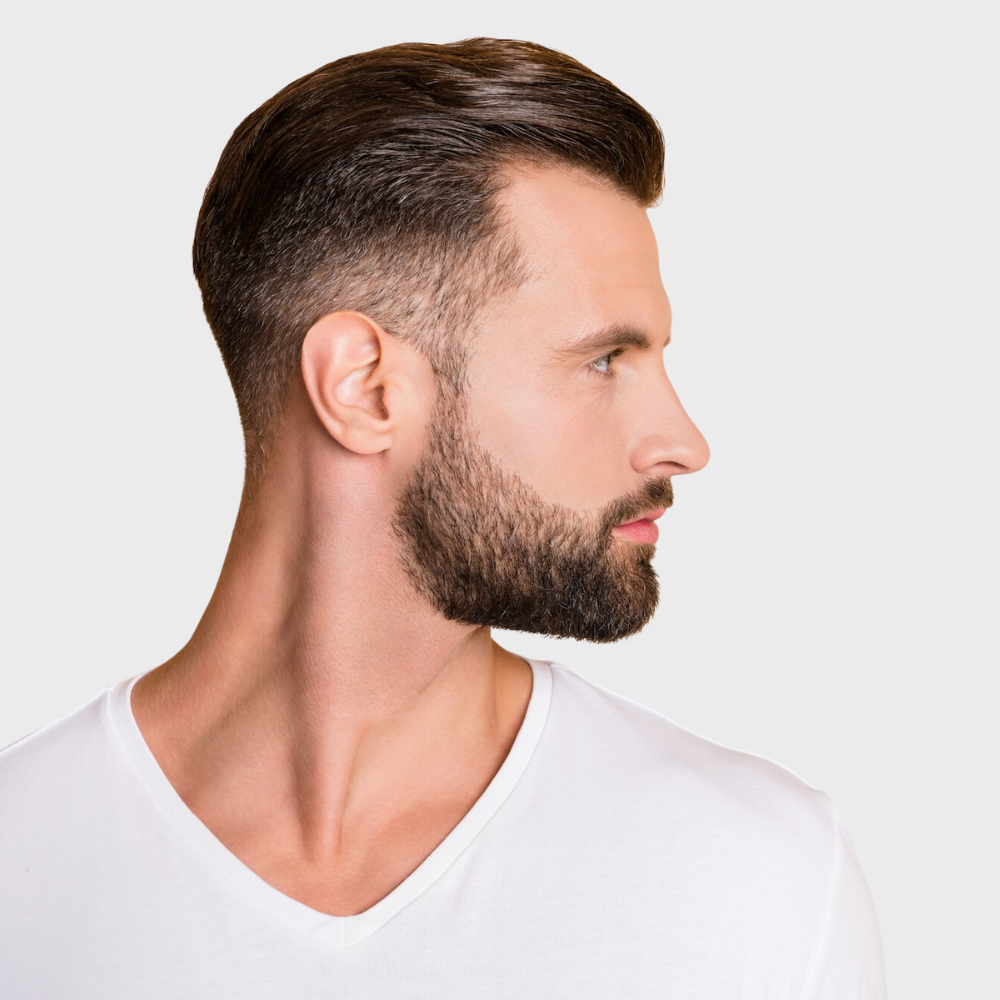
4. Freedom to Experiment:
– With a fuller beard obtained through transplant, individuals gain the freedom to experiment with various beard styles and grooming techniques. Whether sporting a classic full beard, a stylish goatee, or a meticulously groomed stubble, patients can express their personality and style preferences with versatility and creativity.
5. Improved Facial Symmetry:
– Beard transplant can help improve facial symmetry by filling in gaps or asymmetrical areas in the beard. A well-balanced beard enhances facial contours, creates a more symmetrical appearance, and draws attention to the eyes and other facial features, contributing to a more attractive and harmonious facial profile.
6. Permanent Results:
– Unlike temporary solutions such as topical treatments or beard grooming products, beard transplant offers permanent results. Once transplanted, the hair follicles continue to grow naturally, providing long-lasting beard density and fullness that can be enjoyed for a lifetime with proper care and maintenance
7. Personalized Treatment:
– Beard transplant is a highly customizable procedure tailored to each individual’s unique facial anatomy, hair characteristics, and aesthetic preferences. Surgeons work closely with patients to design a personalized treatment plan that addresses their specific needs and goals, ensuring optimal outcomes and patient satisfaction.
While beard transplant offers numerous benefits, it’s essential for individuals considering the procedure to be aware of potential considerations and risks. Understanding these factors can help patients make informed decisions and minimize the likelihood of complications. Here are some key considerations and risks associated with beard transplant:
1. Surgical Procedure:
– Beard transplant is a surgical procedure that involves harvesting and transplanting hair follicles, which carries inherent risks associated with anesthesia, bleeding, and infection. Patients should undergo a thorough pre-operative evaluation to assess their candidacy for surgery and ensure they are in good overall health.
2. Scarring:
– Depending on the harvesting technique used (e.g., Follicular Unit Extraction or FUE), patients may experience minimal scarring in the donor area. While FUE typically results in tiny, dot-like scars that are less noticeable, individuals with a history of keloid or hypertrophic scarring may be at a higher risk of developing visible scars.
3. Post-operative Recovery:
– Following beard transplant, patients can expect a period of recovery characterized by swelling, redness, and scabbing in the transplanted area. It’s essential to follow post-operative care instructions provided by the surgeon to minimize discomfort, promote proper healing, and reduce the risk of complications.
4. Graft Survival and Hair Growth:
– While most transplanted hair follicles successfully take root and grow in the recipient site, there is a risk of graft failure or poor hair growth in some cases. Factors such as inadequate blood supply, trauma to the transplanted area, and individual variations in healing response can affect graft survival and hair growth outcomes.

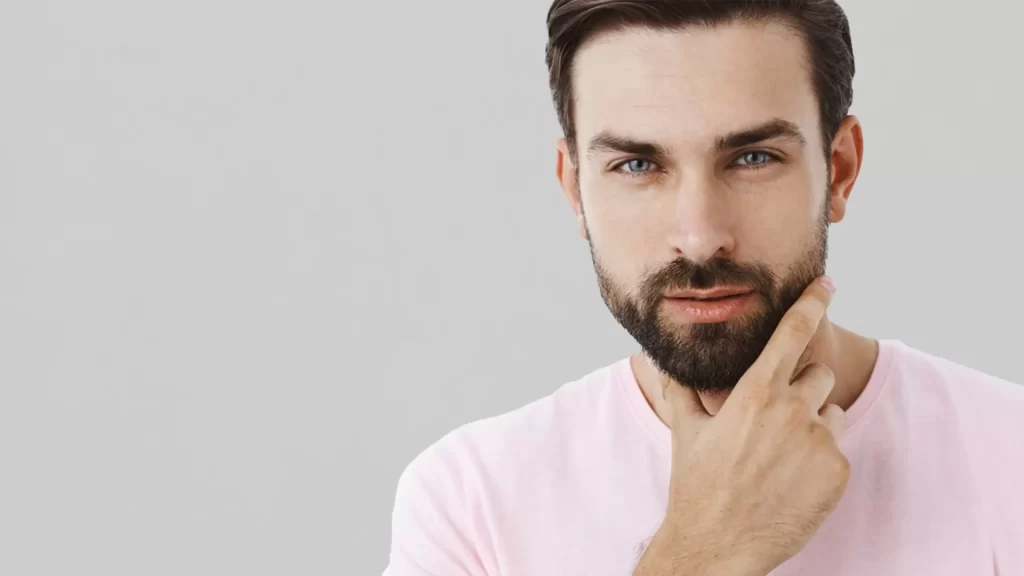
5. Uneven Growth and Aesthetic Concerns:
– Beard transplant requires meticulous attention to detail to ensure natural-looking results and avoid aesthetic concerns such as uneven growth, unnatural hair direction, or “patchy” appearance. Patients should choose a skilled and experienced surgeon specializing in beard transplant to minimize the risk of undesirable outcomes.
6. Patient Expectations:
– Managing patient expectations is crucial in beard transplant, as results may vary depending on factors such as the patient’s natural hair characteristics, facial anatomy, and surgical technique. Patients should have realistic expectations regarding the outcome of the procedure and understand that achieving the desired beard aesthetics may require multiple sessions or additional grooming.
7. Long-Term Maintenance:
– While beard transplant offers permanent results, patients should be prepared for long-term maintenance and grooming to preserve the appearance of their transplanted beard. Regular trimming, shaping, and conditioning may be necessary to maintain optimal beard aesthetics and ensure a well-groomed appearance over time.
By carefully considering these factors and discussing them with a qualified surgeon during the consultation process, individuals can make informed decisions about beard transplant and take proactive steps to minimize risks while maximizing the likelihood of achieving desirable outcomes. Choosing a skilled and reputable surgeon, adhering to post-operative care instructions, and maintaining realistic expectations are essential elements of a successful beard transplant journey.
Where to find my surgeon
Selecting the right country for your beard transplant is essential for ensuring a successful and satisfying experience. Factors such as expertise, affordability, and quality of care play significant roles in making this decision. While many countries offer beard transplant services, Iran emerges as a premier destination for this procedure.
In Iran, beard transplant has garnered widespread recognition for its excellence in cosmetic surgery and hair restoration. Renowned for its highly skilled surgeons and state-of-the-art medical facilities, Iran provides patients with access to world-class expertise and advanced techniques in beard transplant.
One of the key advantages of choosing Iran for your beard transplant is its affordability without compromising on quality. Compared to many Western countries, the cost of beard transplant in Iran is considerably lower, making it a cost-effective option for patients seeking exceptional results within a reasonable budget. Moreover, Iran’s commitment to patient care and satisfaction is evident in its hospitality and personalized approach to treatment. Patients traveling to Iran for beard transplant can expect to receive attentive care, comprehensive pre-operative assessments, and post-operative support to ensure a smooth and successful recovery.
Additionally, Iran’s rich cultural heritage and vibrant atmosphere offer a unique opportunity for patients to combine their medical journey with exploration and relaxation. From historic landmarks to bustling bazaars and picturesque landscapes, Iran provides a diverse range of experiences that enhance the overall journey of beard transplant.
Cost of beard transplant in Iran
The cost of beard transplant can vary significantly depending on various factors such as the geographical location, surgeon’s expertise, extent of transplant required, and chosen technique. Generally, prices for beard transplant range from a few thousand dollars to several thousand dollars in many countries.
However, one notable exception is Iran, where beard transplant is available at remarkably affordable rates. In Iran, the cost of beard transplant typically starts from $900, making it one of the most cost-effective options for individuals seeking to enhance their facial aesthetics through beard restoration.
Despite its affordability, beard transplant in Iran does not compromise on quality or standards of care. Patients can expect to receive top-notch medical treatment from highly skilled surgeons and state-of-the-art medical facilities, ensuring optimal results and patient satisfaction.
The affordability of beard transplant in Iran has made it a popular choice for patients from around the world seeking cost-effective solutions for hair restoration. By offering competitive pricing without sacrificing quality, Iran has established itself as a leading destination for individuals looking to achieve a fuller, more vibrant beard at an affordable cost.
Take away
Beard transplant is a procedure aimed at individuals who desire fuller facial hair, often due to patchy or sparse growth. Common reasons for considering beard transplants include addressing genetic factors, scarring from accidents or surgery, or simply wanting to enhance one’s appearance.
The process involves harvesting hair follicles from a donor area, typically the back of the scalp, and transplanting them into the beard area. Various methods such as follicular unit transplant (FUT) or follicular unit extraction (FUE) are employed during the procedure.
The benefits of beard transplants include achieving a natural-looking and permanent solution to facial hair concerns. However, individuals considering this procedure should carefully weigh the considerations and risks, including potential scarring, infection, or uneven hair growth.
Finding a qualified surgeon specializing in facial hair transplant is crucial, and individuals should conduct thorough research to ensure expertise and credibility. Mediranco is a top-notch medical tourism company aiming at providing the best quality and care for cosmetic surgeries.
Is beard transplant a painful procedure?
Beard transplant is performed under local anesthesia to ensure patient comfort during the procedure. While patients may experience mild discomfort or soreness afterward, it is typically manageable with pain medication prescribed by the surgeon.
How long does it take to see results after beard transplant?
Initial results of beard transplant may be visible within a few weeks to a couple of months as the transplanted hair follicles begin to grow. However, it can take up to a year for the full results to become apparent as the transplanted hairs mature and blend seamlessly with the existing beard hair.
Are the results of beard transplant permanent?
Yes, beard transplant offers permanent results. The transplanted hair follicles are harvested from areas of the scalp genetically resistant to balding, ensuring long-lasting and natural-looking beard growth.
What are the potential risks or complications of beard transplant?
While beard transplant is generally considered safe, like any surgical procedure, there are potential risks and complications. These may include infection, swelling, bleeding, scarring, and uneven or unnatural-looking results. However, choosing a qualified surgeon and following post-operative care instructions diligently can minimize these risks.


